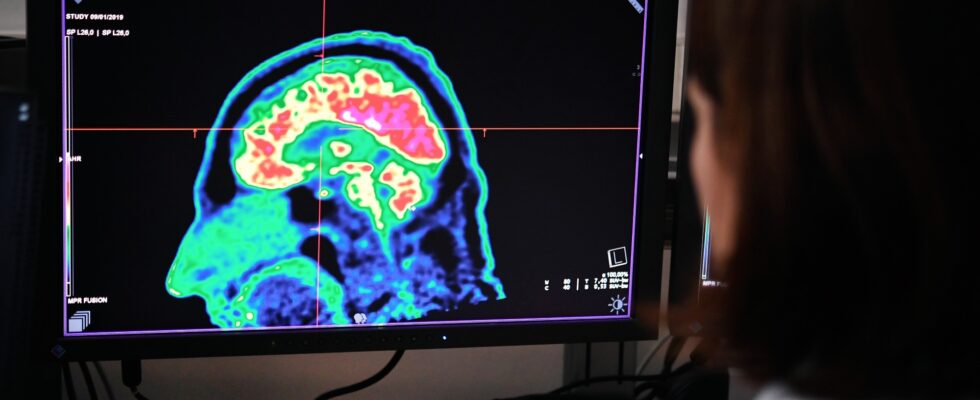Rare but fatal, infiltrating brainstem glioma is one of the most formidable forms of pediatric brain cancer. One child, however, seems to defy the statistics: his cure, unique in the world, today raises great hopes for research. Despite progress in the treatment of pediatric cancers, at the center of a world day on Thursday, this tumor affecting between 50 and 100 children and adolescents each year in France represents a challenge for the medical world.
If the five-year survival rate for pediatric cancer now reaches 85%, some of them, including infiltrative glioma of the brain stem, remain with a poor prognosis. Inoperable, this cancer is usually treated with radiotherapy, which sometimes helps slow the disease but whose effect is transient. No medication has yet demonstrated its effectiveness. The progression is indeed very rapid and the outcome is generally fatal within 9 to 12 months following the discovery of the tumor.
A Belgian child, Lucas, now 13 years old, has nevertheless defied all predictions: diagnosed at the age of 6 with this supposedly incurable disease, he is now considered cured, his brain no longer showing signs of the tumor. “Lucas has exploded all the life counters,” his doctor, Jacques Grill, pilot of the brain tumors program in the pediatric cancer department of the Gustave-Roussy anti-cancer center, south of Paris, rejoices to AFP.
“Biological particularities”
The pediatrician remembers with emotion having announced seven years ago to Lucas’s parents that their son was going to die. At the time, his family came to France for treatment, where the little boy was one of the first patients to join a clinical trial to test a new drug, a targeted therapy. From the outset, Lucas responded very well to the treatment. “Over the course of the MRIs, I saw the tumor completely disappear,” says Dr. Grill, who does not dare, despite these miraculous results, to decide to stop the medication. Until he realized, a year and a half ago, that the child himself had stopped taking it.
“A case like this, I don’t know of another in the world,” confides the doctor, whose team began research into this cancer around fifteen years ago. It remains to be understood why Lucas recovered and how his medical case could bring hope to hundreds of young people in the future. A dozen other children included in the same clinical trial saw their life expectancy exceed statistics and are still alive several years after diagnosis — but their cancer has not completely disappeared.
An increased life expectancy undoubtedly due to “biological particularities of their tumor”, explaining their better response to treatment than other patients under the same therapy, underlines Dr Grill.
“Long-term work”
“Lucas’ tumor had an extremely rare mutation and we believe that it was this mutation that made his tumor cells much more sensitive to the drug,” adds the pediatrician, also a researcher at Inserm.
In an ongoing trial (Biomède), which compares the drug received by Lucas to a promising new treatment, Gustave-Roussy researchers are not only studying the genetic abnormalities of the tumors of all patients but are also making tumor organoids (3D copies of the patient tumors carried out in the laboratory) to understand their biology and their sensitivity to drugs.
“The case of Lucas opens up real hope: we will try to reproduce in vitro the alterations that we have identified in his cells,” Marie-Anne Debily, teacher-researcher supervising this work, explains to AFP. Concretely, the medical teams want to discover if the DNA alterations that Lucas presented, once “reproduced” in other patients, also result in a reduction in their tumor.
If this is the case, “the next step will be to find the drug having the same effect on tumor cells as these cellular modifications”, indicates Marie-Anne Debily. Enthusiastic about this new “therapeutic avenue”, doctors warn however that it will take years before finding a possible curative treatment. “It takes on average 10 or 15 years between the track and the drug, it’s long-term work,” recalls Jacques Grill.
